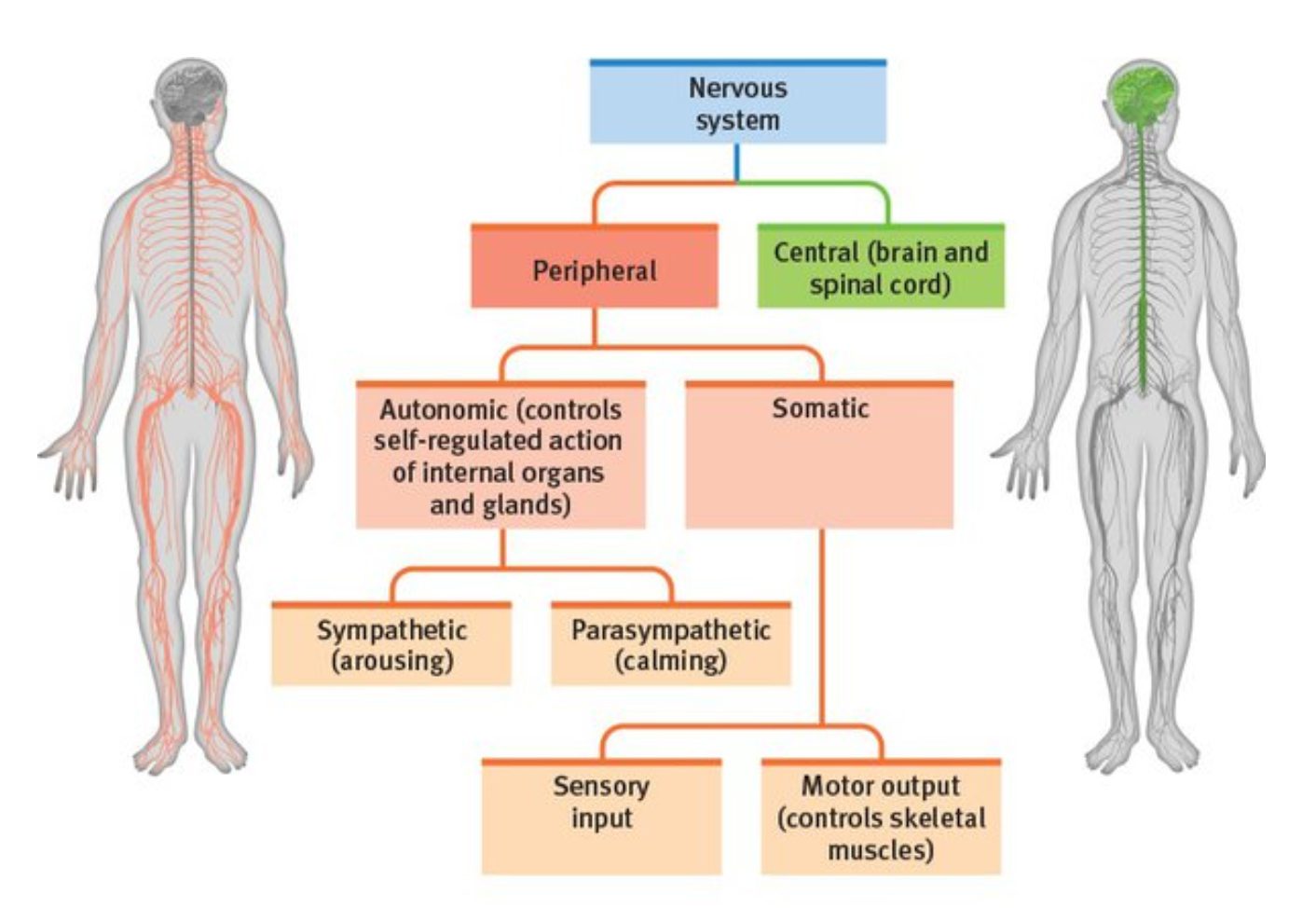Breath Science

Breathing and your Nervous System
The way you breathe can have a direct impact on your nervous system. To understand this effect from a science perspective, it’s helpful to learn about the parasympathetic and sympathetic components of our nervous system as breath is controlled by, and conversely, significantly impacts these two systems.
While both the Parasympathetic and Sympathetic Nervous Systems are necessary for survival, they have different roles within the body. The Parasympathetic Nervous System predominates in quiet “rest and digest” conditions while the Sympathetic Nervous System drives the “fight or flight” response in stressful situations. Understanding how these two systems work can help to maintain a healthy balance within the body.
The human nervous system consists of two parts, the autonomic (involuntary) and voluntary nervous system.
The Autonomic Nervous System (ANS) regulates the body’s involuntary actions, such as heart rate, digestion, and respiration. It is made up of two parts: the Sympathetic Nervous System (SNS), which activates the “fight-or-flight” response, and the parasympathetic nervous system (PNS), which promotes rest and relaxation.
The parasympathetic nervous system works in opposition to the sympathetic nervous system. The parasympathetic nervous system is mainly responsible for activities that occur when the body is at rest, such as increasing saliva and digesting food, decreasing heart rate and blood pressure, as well as healing. It controls the body’s ability to relax.
In contrast, the sympathetic nervous system is responsible for activities that occur when the body is under stress, such as dilating blood vessels, increasing blood pressure, contracting muscles, secreting sweat from sweat glands, and expanding bronchi for an increased exchange of oxygen.

The sympathetic nervous system plays a major role in helping humans survive in potentially hazardous environments.
The parasympathetic nervous system plays a vital role in maintaining homeostasis in the body and allowing us to rest, relax, and restore energy. Without the parasympathetic nervous system, our bodies would be constantly in a state of fight or flight. Both systems are necessary for survival, but they have different roles that are essential.
Breath and respiration are controlled by both the SNS and PNS. It is well established that breathing pattern can influence state of mind and neural activity. For example when we take a deep breath in, or reach fast and shallow, the SNS is activated. This increases our heart rate and blood pressure. When we exhale, the PNS is activated, which calms us down and lowers our heart rate and blood pressure. Therefore, breath and respiration can be used to activate either the SNS or PNS, depending on what we need at any given moment. In addition to shifting us from parasympathetic or sympathetic activation, changing one’s breathing pattern can actually lead to changes in the brain.
We aim to enlighten and guide our community in harnessing the power of their own healing through breathing.
PLEASE REVIEW OUR MEDICAL DISCLAIMER HERE
